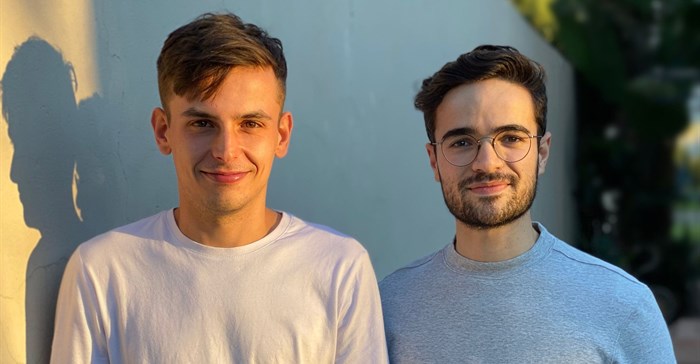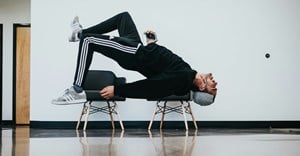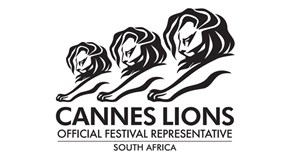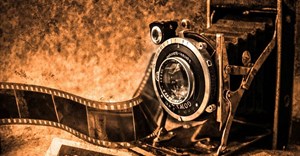Trending
Elections 2024
Jobs
- Studio Account Manager Cape Town
- Inside Sales Representative White River
- Brand Ambassador White River
- Sales Consultant White River
- Communications Manager George
- Print Machine Minder - Intern Edenvale
- Field Sales Representative White River
- Sales Consultant White River
- Outside Sales Representative White River
- Social Media Manager Cape Town
Local creatives to represent SA at #CannesLions2022

Christian Botha from Ogilvy Johannesburg and freelance video editor Rafael Ferrao, after creating their video on ‘providing families of children on the autism spectrum with parent coaching and training’, took home the gold.
“We’re so grateful for the opportunity from Ster-Kinekor for hosting the competition, the Creative Circle and all those involved in us making this ad,” they said. “But more than that, we know that not everyone has our kind of access and hope that more opportunities like this to grow young creatives are made in South Africa.”
Botha and Ferrao believe that young creatives might have solutions to solve the problems South Africa faces and that the importance of putting younger voices in these spaces cannot be overlooked.
“The youth of SA have a lot to say, but in the inclusion of our young voices, we hope we are part of the roar,” Botha and Ferrao said.
We spoke to them to find out more about their creative process and how it feels to be selected to represent South Africa at Cannes this year…
Congratulations on being chosen to represent SA at Cannes! How are you feeling about it?
Thank you so much! We were happy but still shocked that we won, especially as we knew we would be competing alongside the high level of young talent in South Africa. Seeing the incredible work put out there every day, not only in this competition, means it’s a great feeling for a project to be noticed and appreciated. It’s that feeling of being seen.
Other than that, we’re excited about the next round and honoured to be representing South Africa on the global stage.
Tell us a bit more about your work - what does your day-to-day look like?
Rafael: I am currently freelancing as a video editor after finishing my studies at Wits in Film and Television. I’m also taking the time to write and find funding for a couple of short film projects. I plan on focusing on uplifting stories around individuals who repair and resist certain political and social issues in and around South Africa.
Christian: I’m an art director and designer at Ogilvy Johannesburg. So, day-to-day I work on some exciting big brands. In the background, I’m also designing and looking to manufacture furniture to build my own brand, ONAARD, that speaks to our essence and that of the things around us.
In a nutshell, we’re both trying to find inspiration in as many ways as possible to turn it into something more.
Could you tell us more about the project - who was involved and what got you to this point?
Christian first heard about the competition through Ogilvy and we thought it would be a great opportunity to play around creatively and put ourselves to the test in a high-pressure environment.
It started out just for the fun of it to make something since we hadn't worked on a project together for a while.
It was a great process where friends and family got roped into helping out. With drone footage they had taken, drawings they had drawn, lending equipment and just listening to us bouncing ideas. Our lead, Boitshoko, and his mum, Christinah, were such an asset with taking direction and making themselves available after asking them the night before.
The Ogilvy CD team were also hugely appreciated for making time on the weekend to listen to our idea and tell us we weren’t completely crazy for wanting to rely on single takes and no post-work by using projectors.
What was your creative process while putting the project together?
We already knew each other’s strengths from working on other projects together. We started by highlighting the common characteristics that people with autism often show, both from people that we have met and through research.
From there, we sat down and built on each other’s ideas until we were happy with the core direction. Then we went off into our own spaces. After working on the different parts, we regrouped and went back to that initial phase of bouncing ideas off each other to edit and refine what we thought before filming, to edit and refine what we shot. Sometimes that creative process is messy, but that’s what makes it work.
What has the response to the video been like?
So far, it's been a really special feeling of the work being seen how we hoped people would. From hearing from people we haven't spoken to in a while, to those who have experience with the autistic community reaching out, to seeing our work on social media and hearing about how the Ernie Els Foundation took to the piece.
It really was about the work and how, even though we made it, it has its own life that is being recognised. We feel like that’s when a piece of work is something we’re proud of - when it’s not submission, or short film, or billboard but starts to have its own kind of life.
What was your inspiration when creating the video?
The Els for Autism foundation itself was a massive inspiration in how they function. In our submission, we didn't see autism as something that could be fixed because it was never something to fix. That was a strong starting point for us. That’s where the idea of ‘speaking the same language’ as those with autism came in - that betterment comes from an understanding of how the person may be feeling beneath the layers we don't see as neurotypical.
In a lived-experience way, making the ad was also a process of self-reflexivity where we could better understand the behaviour of one of our loved ones who, while undiagnosed, portrays many of the characteristics we tried to grapple with in making the film. As much as we were making the ad for the competition or for the foundation, we were making it for ourselves for this understanding.
What was the most rewarding part of putting this project together?
The most rewarding part about the project was at some point in the middle when you put it all together. It was stressful trying to arrange cast and footage and a projector, but at the same time, it was a feeling of pure excitement. It’s not every day you get to work with your best friend and be in a creative space with them.
Seeing the response from people we work with who have family members with autism, or those we know and them feeling heard has also been a high point because we felt what we were saying was true and that this piece we were making had some meaning more than just footage. That’s what matters when talking about something or someone different to yourself - making sure that what you're saying says something to them.
For more:
- Cannes Lions special section and search
- More info: Google News, Cannes Lions Twitter
- Official site: http://www.canneslions.com, Facebook, Twitter, Instagram






















